Ecology ! Does it have a role on the modern golf course?
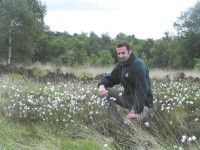 Richard Stuttard, the STRI's Ecologist, looks at the relationship between management of the ecology and a golf course's bank balance.
Richard Stuttard, the STRI's Ecologist, looks at the relationship between management of the ecology and a golf course's bank balance.
If you were to ask a golfer what his or her perceptions of ecology were within golf you may well get a varied response. It is generally the case that they have no opposition to the concept of ecology, if they understand it in the first place, as long as it doesn't interfere with their golf.
Many, in their keenness to get out and play, fail to recognise the benefits wildlife has on playing the game. To some there is a conscious benefit where the landscape and its wildlife are strongly dominant. This may be a reason why a golfer would choose which course to play on. To others, wildlife represents a subliminal part of the golfer's enjoyment of the game.
Golf courses are nature reserves whether golfers realise it or not. Many of our rarest species are found nowhere else but on golf courses. For example, Lizard Orchid, Bedstraw and Clove Scented Broomrape are only found at Royal St. George's Golf Club.
It is not only prestigious courses that support the best wildlife. Take Bradley Park Golf Club for example. This c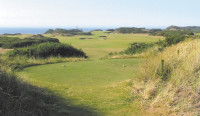 ouncil run club near Huddersfield, West Yorkshire, is committed to improving wildlife on the course. The Club have erected nest boxes, installed signage to educate golfers on what is going on around the course and have been successful in conserving Great Crested Newts and orchids by understanding and managing their habitat requirements and, importantly, by communicating the need with visitors and the Local Authority who manage the course.
ouncil run club near Huddersfield, West Yorkshire, is committed to improving wildlife on the course. The Club have erected nest boxes, installed signage to educate golfers on what is going on around the course and have been successful in conserving Great Crested Newts and orchids by understanding and managing their habitat requirements and, importantly, by communicating the need with visitors and the Local Authority who manage the course.
Golfers perceptions of wildlife will vary depending on their understanding of the course set up and the context and role of the Golf Course in the local area.
The secret to success
The formula for developing a golf course that can be sustainable in the long-term can be viewed as a three-tiered pyramid, with the tiers consisting of environment, social status, and economic status. The order in which these are prioritised is the key to developing sustainability.
At the base of the pyramid, and therefore being the key supporting structure is the environment. This relates to the positioning of the golf course within the 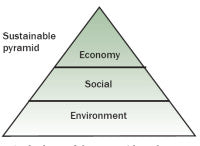 wider landscape context.
wider landscape context.
The perception is that greens are of the highest priority and, it is often the case, that the environment is only considered if perhaps the club has spare resources and time. Greens are, of course, very important. It is vital that they are firm, fast and true in order for the club to earn the respect of the golfers. However, it is time we understood the context and importance of the environment.
So, to return to the sustainability pyramid, if we have a strong environmental foundation, i.e. a course that is highly desirable to play in terms of its 'presence' within an ecologically diverse and interesting landscape and, of course, its high quality playing surfaces, then we have a firm base to build social structure into our pyramid. A course with a sound environmental base will encourage membership (word gets around very quickly in golfing circles) and, if the base is maintained, not only will the existing membership remain, but will see strong growth.
With this, comes the top tier of the pyramid - economic growth. With increased membership comes increased economic sustain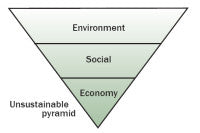 ability, some of which can be put back into further enhancing the environmental base and so the pyramid turns into an ever growing cycle of prosperity for the club.
ability, some of which can be put back into further enhancing the environmental base and so the pyramid turns into an ever growing cycle of prosperity for the club.
If the pyramid is turned upside-down, with economics as its base, the future of the course becomes unstable. With minimal investment in the course, the club doesn't develop a good reputation and, with plenty of competition around, will more than likely lose membership to another nearby club who may recognise the importance of, and put money into developing, their environment.
It is generally the case that golf courses concerned about the environment are those that have been stable, have grown, and continue to grow through to the present day.
Is there a problem?
Golf club membership is in decline, with pay and play becoming ever more popular from council run courses to prestigious courses such as the Belfry. Why is this? The high cost of membership is clearly a factor but there are other problems which contribute. Many members have been loyal to their club for years and the average age is generally quite high. As such, the course is often tailored to suit their style of play. With younger golfers, and those new to the game, there is a culture developing of wanting a course suitable for use by owners of the latest hi-tech drivers capable of hitting the ball miles.
The latest equipment is enabling golfers to drive the ball over 300 yards off the tee and many membership courses are not set up for this type of distance play. In the current competitive golfing environment it is vital to the club to keep existing members happy and so they are often reluctant to change the course in any way. Members of course are often highly devoted to their club and have a keen interest regarding what is happening with it. This reluctance to change, along with perhaps insecurities about how to approach change, means that new members may be put off and alienated from the club through its apparent lack of willingness to cater for a wide range of golfing styles. This means there is no scope for the club to expand and indeed, the only direction for the club to go is towards social and economic instability.
What can be done?
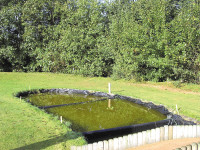 It has been discussed earlier how improving the environment is a key factor to developing a sustainable golf club. It is often the case that this can be achieved, quickly and cost effectively with the advice of a golf course ecologist. Large scale changes cannot occur overnight, but a visit from an ecologist provides a wealth of information.
It has been discussed earlier how improving the environment is a key factor to developing a sustainable golf club. It is often the case that this can be achieved, quickly and cost effectively with the advice of a golf course ecologist. Large scale changes cannot occur overnight, but a visit from an ecologist provides a wealth of information.
Not only about what the course currently has to offer in terms of its wildlife and playability, but also what its potential is to develop in order to meet the needs of the new generation of players. I mentioned earlier about the need to be sensitive to all styles of play and the team at the STRI provides advice on just this topic.
For example, one of our principle concerns is to develop more species rich 'ecology rough' on the golf course. This is not only a haven for wildlife, but also provides an interesting and challenging hazard when shaped appropriately. If the design is right the 'ecology rough' forms a feature that, whilst a prominent aspect of the hole, is still sympathetic to the style of play of both the more seasoned golfer and also those that are able to hit the ball 300+ yards. It is simple design features such as this that enable a club to develop its environmental and, therefore, a competitive edge which leads to social and economic prosperity.
Whichever club you consider, there is always work that can be done. The key is to recognise the need for this work, not only from an ecological point of view but also a sustainability point of view. Once the need is recognised, a willingness to carry out the work and progress forward is vital.
Members often don't like change and, because of this, greenkeepers and chairmen of greens are often reluctant to inflict any upon them. Education is the key here. Keeping members informed about why work is required is vital to keeping them on your side.
There are many ways in which this can be done including postings on club house notice boards, providing monthly updates on the club's website, or even bringing in outside professional advice to discuss with the members directly the reasons behind the initiatives and the benefits they will bring. Whichever route you decide to take, keeping people educated and informed is vital.
Times are changing
There are new trends emerging within this sector to be considered. I mentioned earlier that part of the reason for 'pay and play' becoming more popular, apart from high membership costs, was the fear of change by traditional golf clubs. But that's not the whole story.
Society golf is increasingly becoming big business. That is, companies taking large groups of their staff members, and often bu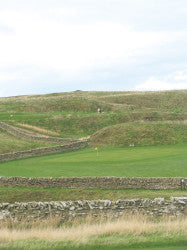 siness associates, to hotel and golf complexes for reasons such as networking and team building exercises. These golf facilities provide an all round corporate hospitality package and, in order to attract business, aim to be able to claim their greens as being the fastest playing surfaces in the land.
siness associates, to hotel and golf complexes for reasons such as networking and team building exercises. These golf facilities provide an all round corporate hospitality package and, in order to attract business, aim to be able to claim their greens as being the fastest playing surfaces in the land.
This is deemed to be important in a competitive market but, in reality, it is by no means the be all and end all. The fact is that less than 1% of golfers in Europe play off a handicap of less than 5 and, therefore, whilst firm, true and reasonably fast putting surfaces are important, there should be recognition of other factors.
So the question, 'does ecology have a role in the modern day golf facility?' is posed again. This time aimed specifically at the pay and play complexes. The answer must be a resounding yes.
A more holistic golfing experience will increase a golfer's desire to visit the course, and indeed return to it. The point is, don't get too hung up on your greens - take time to consider the wider environment.
The message
Providing a stable environment is being increasingly recognised as the key component to developing a sustainable golf club. It is particularly important in today's increasingly competitive and environmentally aware climate, that clubs realise this fast, and don't miss the boat.
If you require any further information on hedgerow planting, maintenance or general ecology please contact STRI's Ecology and Environment Unit on 01274 565131 or email richard.stuttard@stri.co.uk
